Be Here!
Project overview
Image
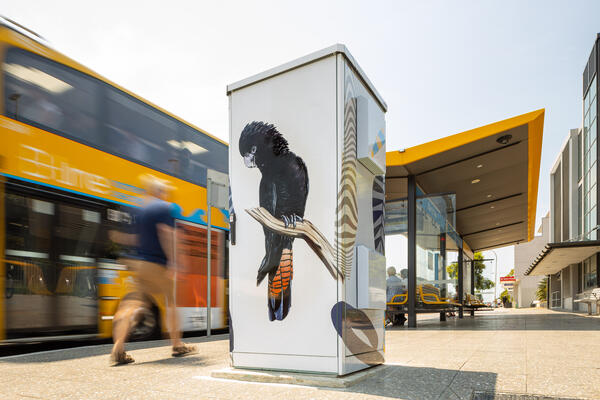
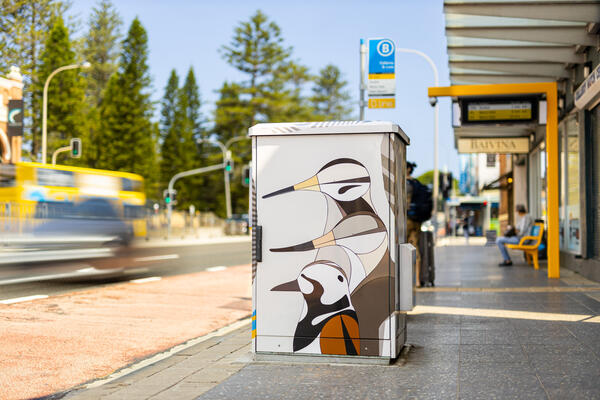
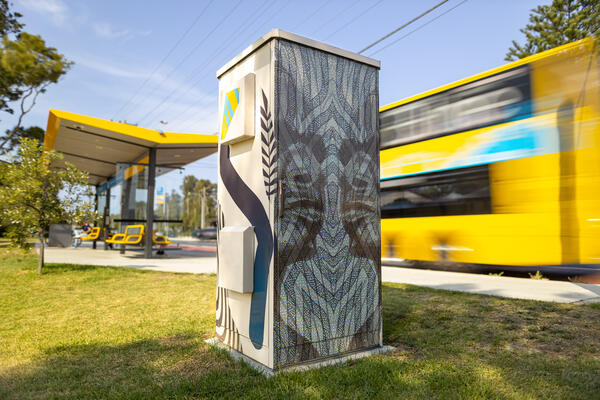
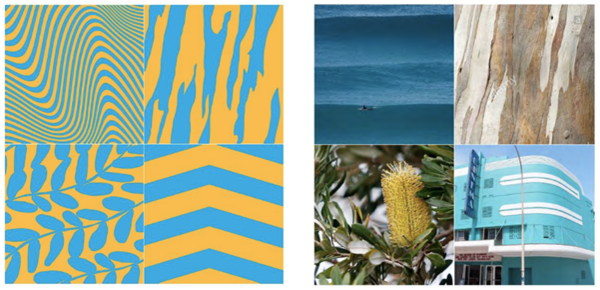
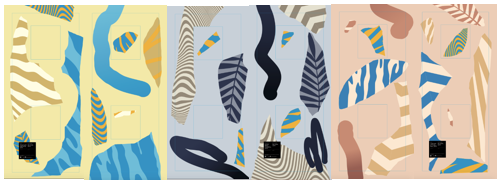
Image controls:
Be Here! showcases the work of 13 professional artists applied to 22 utility boxes along a 27km stretch of the B-Line bus route from Mona Vale to Neutral Bay. Artists with a local connection to the area were commissioned to develop artworks in response to the local context and qualities of each stop location. Be Here! artists have explored themes of the natural environment, indigenous foundations, characters, local history, lifestyle and landscape of this area through a diverse variety of mediums and styles.
To connect the series, a holistic artistic style was developed by artist Elliot Routledge (Numskull) and applied throughout, using vibrant colours and patterns to complement and connect each singular piece. Elliot developed a series of patterns and shapes inspired by universal markers such as ripples of the ocean, trees and flora, architectural lines and forms of classic Northern Beaches / North Shore buildings.
Be Here! provides a display of diverse public artwork for commuters and the local community, bringing colour and art to this transport corridor, celebrating the place and the people that inhabit it.
Dee Why
A Place For Everyone by Geebs
Artist Statement
“The idea behind the concept for Dee Why comes from the diversity of cultures, for all this time living on the Northern Beaches – we’ve lost count of how many people we meet that lived in Dee Why, it’s a place for everyone. For us, the representation of multi-cultures can only be defined by their own characteristics, South Americans and their particular traditions, Indians and their beautiful colours and original outfits, Asians and their rich cuisine, Islanders and their strong presence – Dee Why has it all! Every time the B-Line stops at Dee Why, you can see all this diversity in one single queue, waiting for the bus and ready for another day in Sydney.
New Arrivals by ESEM Projects
Artist Statement
“This artwork concept celebrates migration journeys, with Dee Why a key location for Italian migrants particularly in the post war period. We can highlight the story of a single person or family, or create an artwork that captures multiple stories and journeys. This option (pictured) features archival photography with modern graphical treatments.”
Image of the Cunico family farming, Dee Why ca 1940. Quote by Vincenzo Tomaino, Market Gardener – migrated to Dee Why 1948. Italian migrants have settled on the Northern Beaches of Sydney since the mid1800s. The first Italian market gardens began in Dee Why and Beacon Hill in the 1920s and 30s.
Dee Why by Cameron Bloom
Artist Statement
“My images have always portrayed a sense of beauty, whether physical or emotional. I want people to feel inspired by seeing how a connection to our local environment and nature in general is key to our well-being. And the more connected with nature we are, the happier we feel.”
The beach is an intrinsic part of the cultural identity of Dee Why. Drawing people from all over the world to this beautiful location, Dee Why beach is a unifying landscape for its diverse community. Popular with families and home to many Northern Beaches events, it is known for its striking Norfolk Island Pines planted by the Dee Why Surf Life Saving Club in 1912.
Image
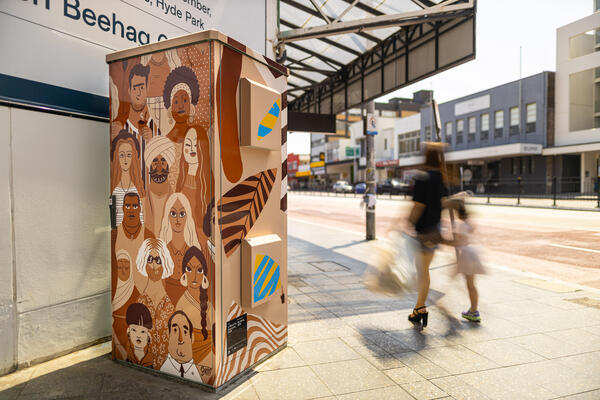
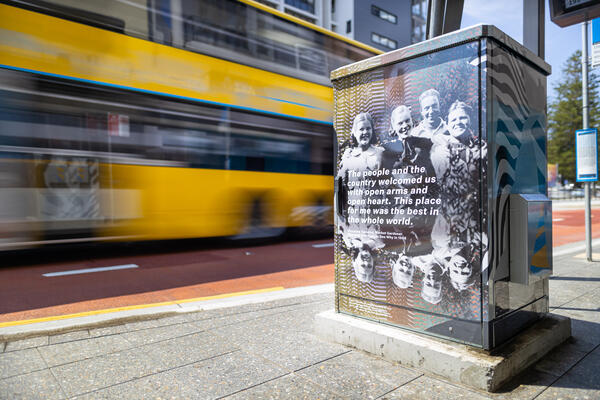
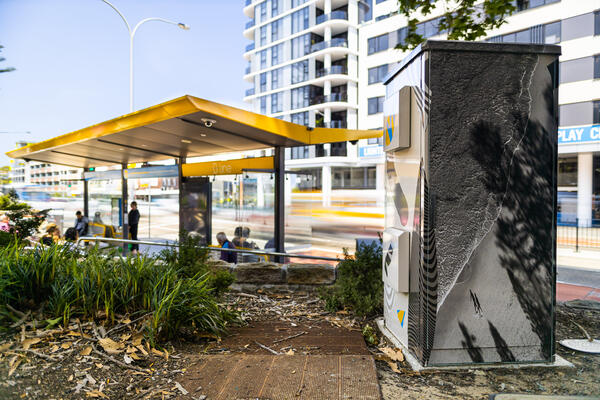
Image controls:
Narabeen
Coastal Culture by Jessica Birk, 2019
Artist Statement
“This artwork concept has been developed as a symbolic reference to the layered kinship systems and lore that define the way Aboriginal people are culturally and spiritually connected to their families and everything around them. This includes their “Country”, the land they belong to, the objects they use, the foods they eat and the medicines they use. It also includes the many animals and plants that live alongside them and elements that surround them. Cultural knowledge and kinship lore have ensured generations of families living on and caring for the landscape of Northern Sydney and the beaches for thousands of years. The graphic designs and linear patterns used...are a contemporary expression of this cultural knowledge...that illustrate how Aboriginal people view and connect to the land as part of a contemporary, ongoing practice.”
Self Portrait by Cameron Bloom, 2014
Artist Statement
“My images have always portrayed a sense of beauty, whether physical or emotional. In the images I have submitted ... there is a distinct theme of belonging which is central to the Be Here! creative vision and overview. I want people to feel inspired by seeing how a connection to our local environment and nature in general is key to our well-being. And the more connected with nature we are, the happier we feel.”
In Aboriginal culture, Magpies are the peacemakers and the great communicators. As totem ancestors they are the fearless ones and if given this as a personal totem you are considered fearless in the face of adversity but have the knowledge to know when there are disagreements to listen and take stock. In other words, they know when to swoop and take stock and when to depart and keep peace. The magpie in this work is called Penguin – the star of one of the Northern Beaches most famous contemporary stories. Cameron is probably best known for this work photographing his family’s relationship with Penguin in the internationally famous book “Penguin Bloom” soon to become a film.
Reach For The Sky by M-Lon, 2019
Artist Statement
“Humpback Whales are an important symbol for the beaches in Sydney. During their migration season they can easily be spotted. The first time I saw one from shore was in Narrabeen. Whales are an animal that make us think of magic, strength, beauty, movement and peace – just like the Northern Beaches make us feel.”
Image
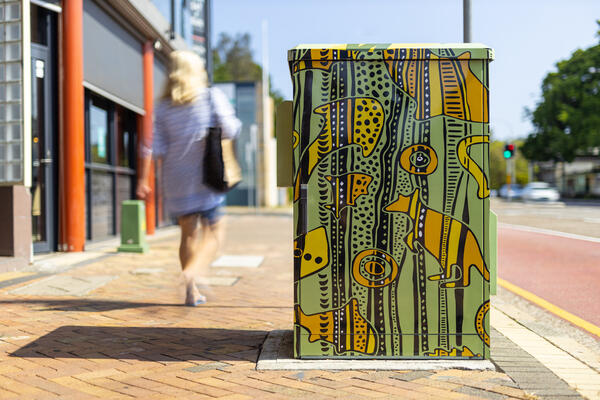
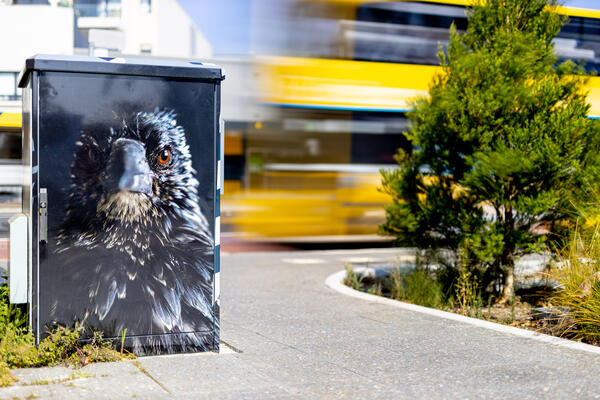
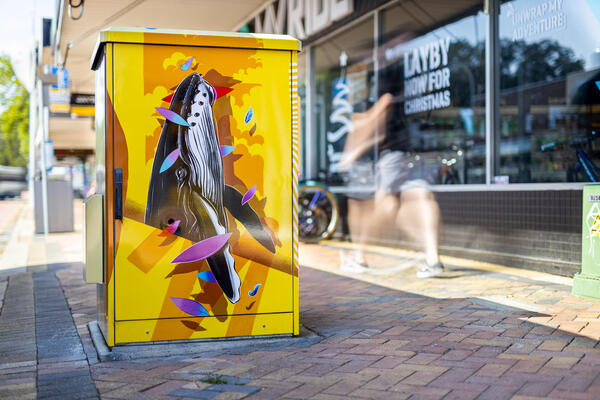
Image controls:
Neutral Bay
The Art of Civics by ESEM Projects, 2019
Artist Statement
“This option includes a creative treatment of a photographic portrait responding to the life and work of Walter Liberty Vernon. Vernon was resident in Neutral Bay and also NSW Government Architect appointed in 1890, designing the Art Gallery of NSW, Central Station and Mitchell Library among other major civic landmarks. Our approach to the artwork
connects contemporary audiences to the story and legacy of Vernon at a time when Sydney is undergoing major civic renewal. The artwork will integrate architectural and artistic motifs that inspired Vernon, including arts and crafts motifs
and free classical style. We see the opportunity to extend this approach in the development of a local artwork for Neutral Bay that captures the civic vision of Vernon, who saw the design of public buildings as ‘Monuments to Art’"
Walter Liberty Vernon (1846-1913)
Architect. Lived in Neutral Bay. As NSW Government Architect he designed many iconic buildings including Central Railway Station, the Art Gallery of NSW and the Mitchell Library
Margaret Tucker MBE by Warwick Keen, 2019
Artist Statement
“The north shore in Sydney was heavily populated with Aboriginal people prior to colonisation and with my concept developments I’d love to highlight this most paramount aspect of this country’s history. I’m a born and bred country man, and my Indigenous heritage emanates from north-western NSW. It was a pleasant surprise for me to discover that Margaret Tucker resided in Neutral Bay and so I have utilised her image among my concepts. I have utilised my own artworks and images as a basis for all of my work. I have also utilised Photoshop software to create a more contemporary feel and design to my selected images.”
Dame Mary Gilmore by Paul McDonald, 2019
Artist Statement
“Dame Mary Gilmore was an Australian writer and journalist known for her prolific contributions to Australian literature and the broader national discourse. She was also the female face of the Australian $10 note and taught at Neutral Bay School. One of her most important works was published in 1931, The Wild Swan, which drilled into the unfair way Aborigines were treated by the white population, particularly in how their old lore was being systematically destroyed. Responding to this, the local history, land and the portrait of Dame Mary Gilmore, I will collect fallen leaves and other plants from the local area. From this I will use a traditional photographic printing process called ’Cyanotype”.
Image
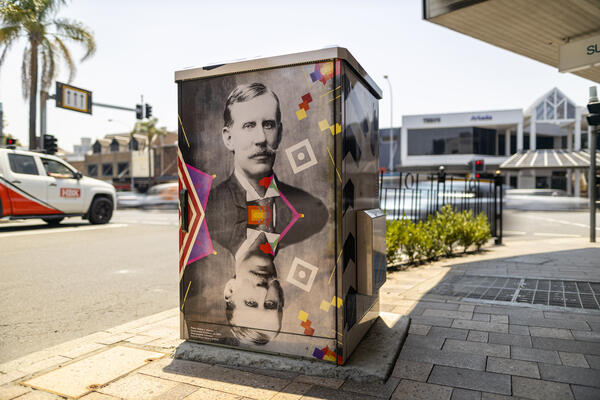
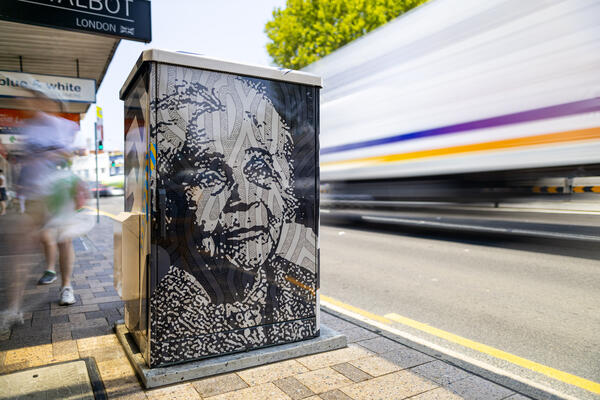
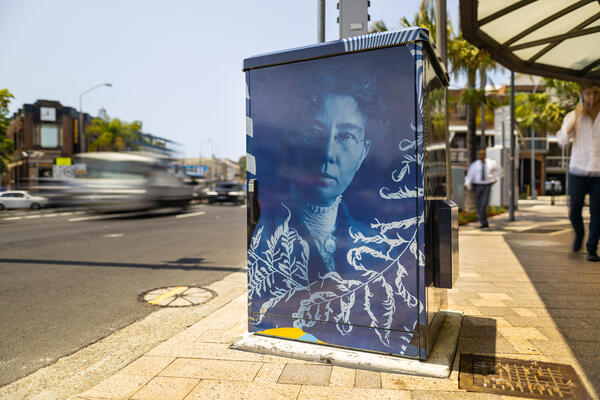
Image controls:
Split Junction
Green and Gold by Thomas Jackson, 2018
Artist Statement
“I was recently invited to Taronga Zoo to see their Regent Honey Eater breeding program...they also have a breeding program for a special native frog, the Corroboree Frog. Although this is not the Green and Gold Bell Frog, this frog is also a native NSW frog that is a threatened species. Climate change, habitat destruction and domesticated pets have all added to the depleting numbers of this special frog and efforts are being made to boost their numbers and habitats. I feel that this, although a different species, will highlight the necessity of protecting our fragile ecosystem and bring awareness and profile to another special little native.”
Always Was, Always Will Be by Warwick Keen, 2008
Artist Statement
“Carved trees have been scarred by Aboriginal people for various purposes, from cutting out bark for a canoe to spiritual purposes. For many east coast groups across south east NSW the scarification of their markings take shape in the form of diamonds representing the southern cross.”
"This pattern is a derivation of designs that were once carved into trees in south-eastern Australia. They are known as dendroglyphs, the designs emanate from natural forms within the landscape."
Dendroglyphs were created to signpost significant cultural sites (burials and initiation) within the country. My designs are not copied from actual patterning, they are a contemporary response to a now lost traditional art practice.
Image
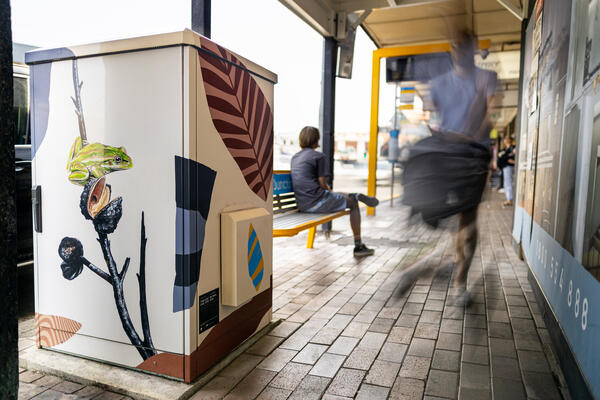
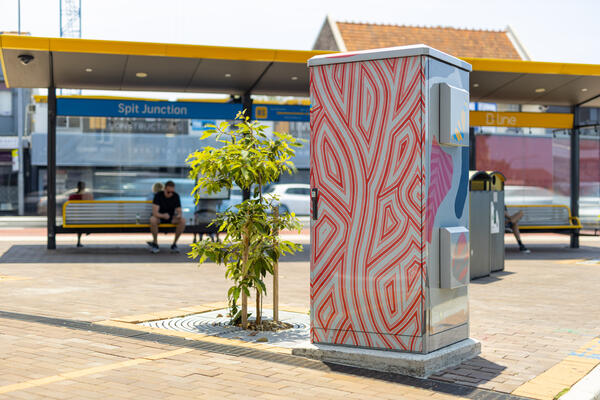
Image controls:
Warriewood
Proud by Warwick Keen, 2007
Artist Statement
“My rationale and concepts are centred on the continuity of Aboriginal cultural practices, whilst retaining the dynamic with a contemporary twist. My designs are an evolution of an antiquated arts practice that signifies the strength and resilience of Aboriginal people and culture.”
Irrawong Falls, NSW by Paul McDonald, 2019
Artist Statement
“Northern Beaches Council is running a ‘Charge Ahead’ program to take action on climate change....’The ocean and the bush were central to the life of the Guringai people, the traditional owners and original inhabitants of our region. That remains true for our community today.” In response to this, I propose to document the local environment, landscape and nature or people within the landscape.”
Image
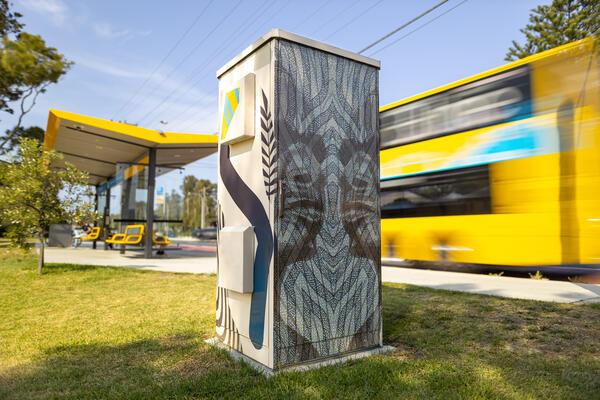
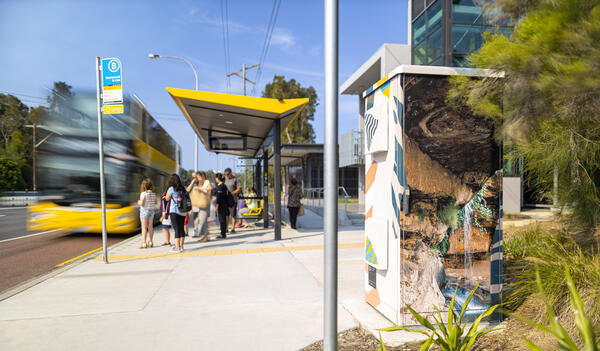
Image controls:
Brookvale
Warringah Mall Stop by Geebs, 2019
Artist Statement
"Warringah Mall Stop....the main stop, the main reference, everyone asks on the bus, “does it stop at Warringah Mall?” From here you can go to the city or Manly, or if you are on the other side of the road you will soon be ready to experience the Northern Beaches way! That’s why we decided to represent the B-Line as part of this place, right next to Brookvale and Freshwater. Warringah Mall is where you can go anywhere and do anything, it connects people to places, surfers and students on a daily basis. You can grab a local brewed coffee and enjoy your travelling, either going to the beach, school or working in the city.”
Magpie at night by Cameron Bloom, 2019
Artist Statement
“I want people to feel inspired by seeing how a connection to our local environment and nature in general is key to our well-being. And the more connected with nature we are, the happier we feel.”
This image conveys a sense of connectedness between nature and the built environment – that we co-exist with an abundance of creatures who are always looking over us, even if we don’t always see them. It is also reminiscent of the night life and bright lights of Warringah Mall and Brookvale.
Image
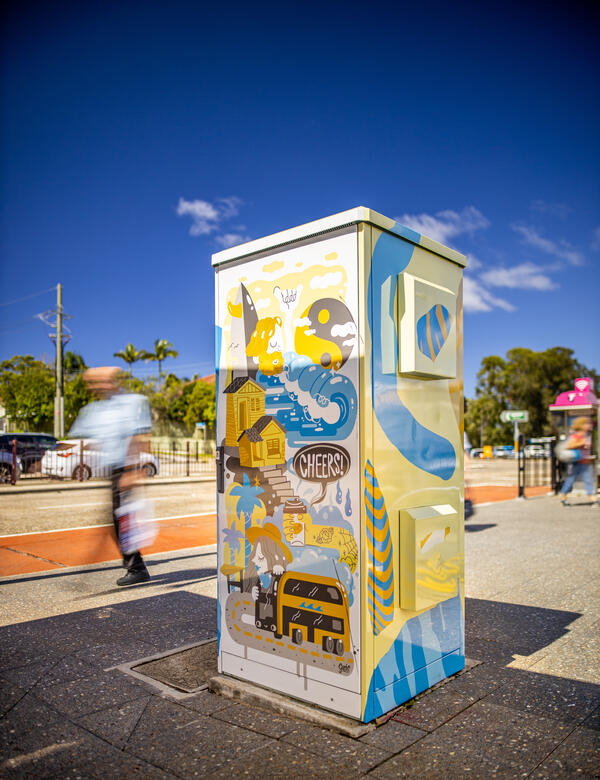
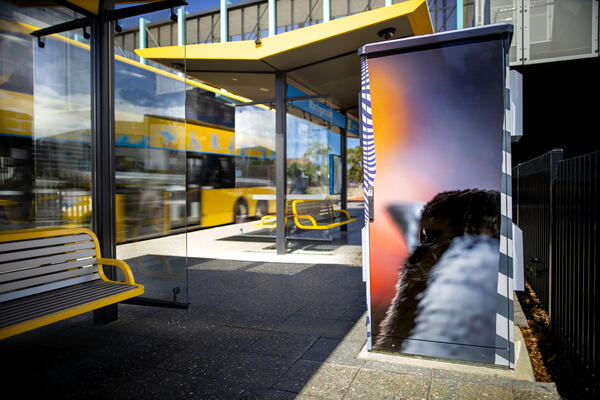
Image controls:
Collaroy
Shorebirds of Collaroy by Eggpicnic, 2019
Artist Statement
“Featuring three different migratory shore birds, this work binds species that have been reported and sighted by citizens of the Northern Beaches and form part of the living system of Collaroy. Most people are unaware of the rich population of migratory birds on our doorstep but wilderness begins right here, where we live. Cities are changing the ecology of the systems they are built on, and birds and animals are adapting to them and are here to stay. We invite local residents to identify the iconic species that call our suburbs home and embrace our intimate connections with the natural world.”
*Species list supplied by Avifauna Research, Birding NSW and eBird
Summer Session by Jason Lerace, 2018
Artist Statement
“This artwork relates to the faces of beach culture. Most people who live on the Northern Beaches are here because of their love for the beaches. The ocean is no doubt part of most people’s day. Everyone has their own affinity and experiences as to what the ocean means to them. It binds and makes a community whole through those experiences. I think an image like this will relate to most people and spark an emotion as to what their home means to them. That early morning or late afternoon swim feeling...something you can’t wait to do when you get off the bus or you have just done before you make your journey to work.”
Image
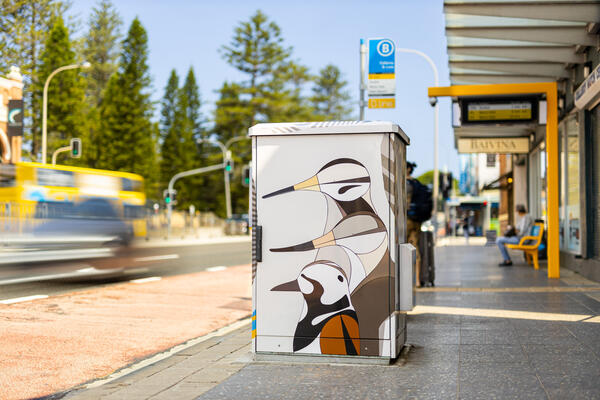
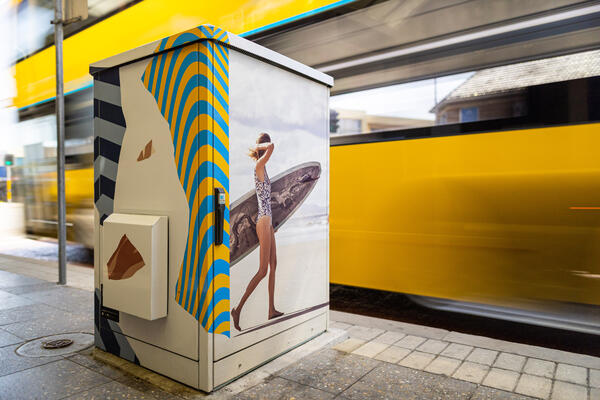
Image controls:
Manly Vale
Glossy Black Cockatoo by Thomas Jackson, 2019
Artist Statement
“The Black Cockatoo is an iconic native bird, with its loud squawk and bizarre behaviour, it is a favourite of lots of Australians. I grew up bordering on the wild flower gardens at St Ives and saw many of these birds in my backyard and always enjoyed watching them eat little pieces of apple we left out for them. I would spend most of my summers out at the Northern Beaches enjoying my summer breaks from school and these little birds.
Indigenous stories relate to Black Cockatoo cries as seasonal warnings of days of rain and the need to ensure the waterways are managed.
Creatures of Manly Dam by Brentos, 2019
Artist Statement
“As a WIRES volunteer and Aussie wildlife lover, Manly Dam holds a special place in my heart. For the Manly Vale piece, I wanted to illustrate the Manly Dam waterway and its local wildlife in all its beauty. The hero of this piece is the endangered Eastern Pygmy Possum perched atop a Banksia flower...which is under severe threat of local extinction due to local land clearing around Manly Dam. In the background I’ve illustrated the Manly Dam landscape and waterway with supporting local wildlife characters including two Black Swans....a Swamp Wallaby, Wood Ducks. Laughing Kookaburra and Sulphur Crested Cockatoos.”
Image
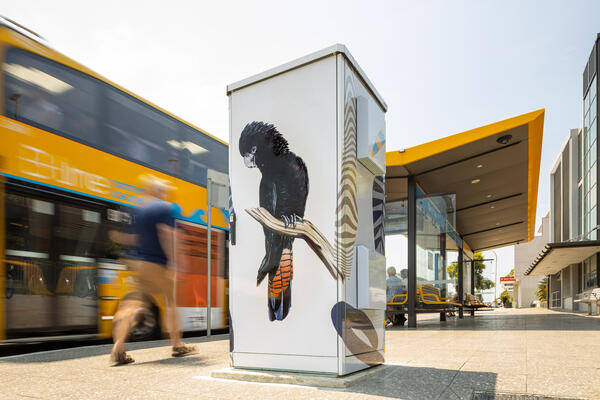
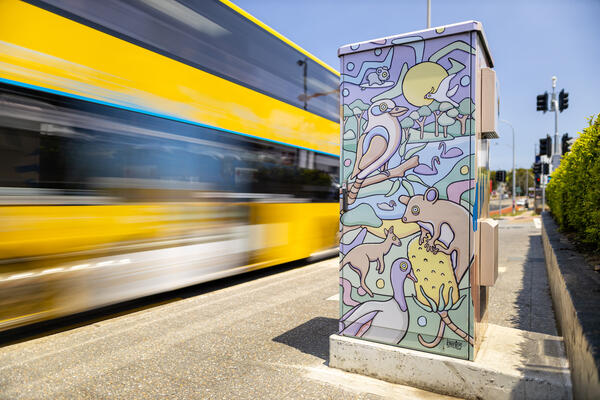
Image controls:
Mona Vale
Marsupials of Mona Vale by Eggpicnic, 2019
Artist Statement
“It is difficult to imagine these species surviving the aggressive rush of hundreds of thousands of people commuting to and from work, the unforgiving noise and the endless additions to the concrete jungle that is an urban habitat. However, a handful of birds and animals have become urban residents of the Northern Beaches, with functioning ecosystems, very different to hundreds of years ago. Cities are changing the ecology of the systems they are built on, and animals are adapting to them and are here to stay. Marsupials binds species that have been reported and sighted by citizens of the Northern Beaches and form part of the living system of Mona Vale. We invite local residents to identify the iconic species that call our suburbs home and embrace our intimate connections with the natural world.”
Beach by Neathway, 2019
Artist Statement
“This artwork reflects the joy of going to beach on the Northern Beaches. While there are literal people in this artwork, I have also represented people through flowers and the sun – the beaming smiles of anyone immersed in beach culture. The Northern Beaches typically have large expanses of golden sand with a nice grassy place nearby to soak it all in. At any of the beaches you will find experienced local surfers, all the way to tourists learning to surf. Among other classic locals I’ve included the notorious chip stealing seagull. When people see this artwork, I want them to smile and imagine their feet in the sand.”
Micro Bat by Thomas Jackson, 2019
Artist Statement
“The Microbat was once very common all over Sydney and its surrounding suburbs but has become less so in recent years as people have started seeing them as pests invading their roof spaces or garden. Many conservation organisations have started creating ‘bat hotels’ in attempts to give these little guys housings within urban environments as alternatives to people homes. The Micro Bat is a nocturnal animal that feeds on mostly flying insects and can be seen flashing through the light stream of street lights snatching up moths and other insects. I personally think these guys are beautiful and love seeing them while out at dusk.”
Colonies of Microbats have been found along the Northern Beaches. At least four species of Microbats have been sighted in the Mona Vale area. Efforts are being made to protect this vulnerable species.
Image
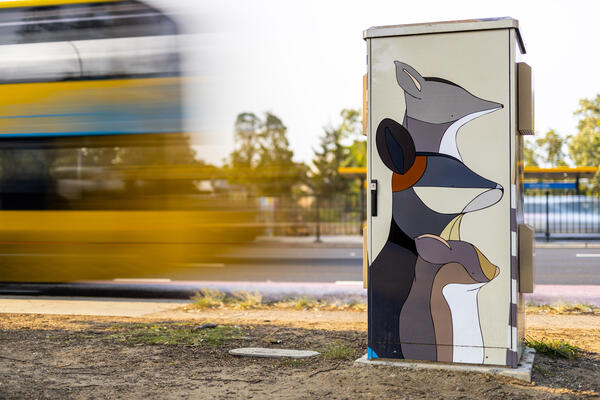
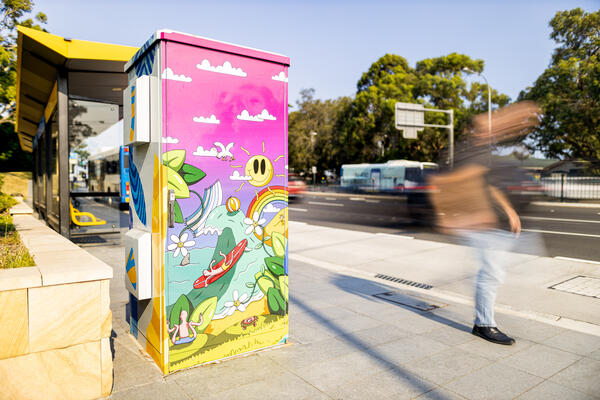
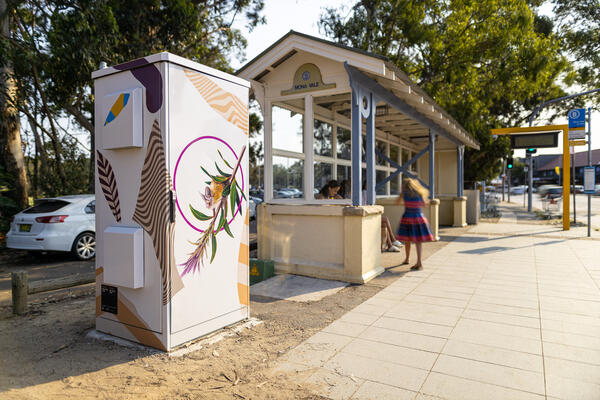
Image controls:
